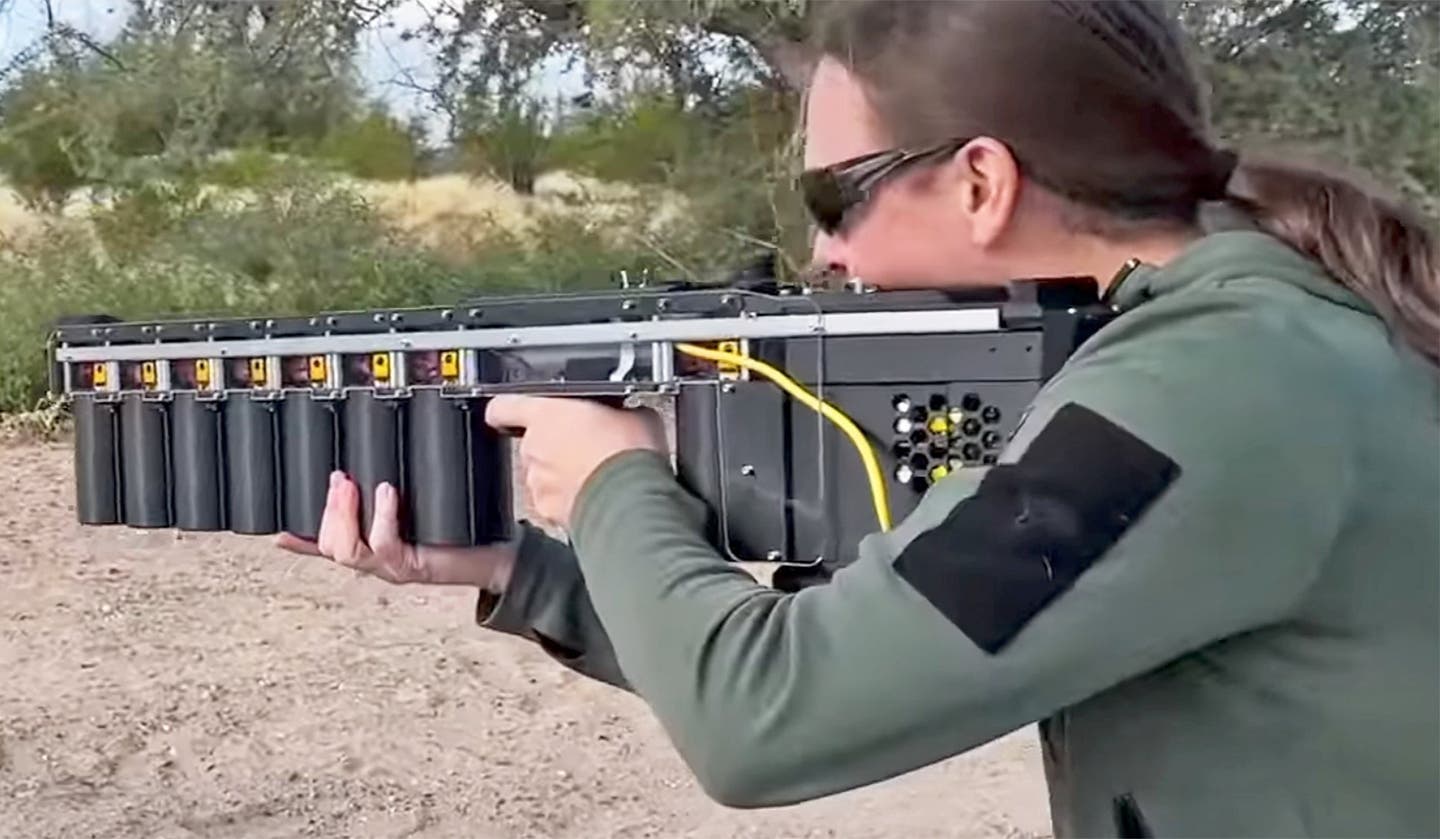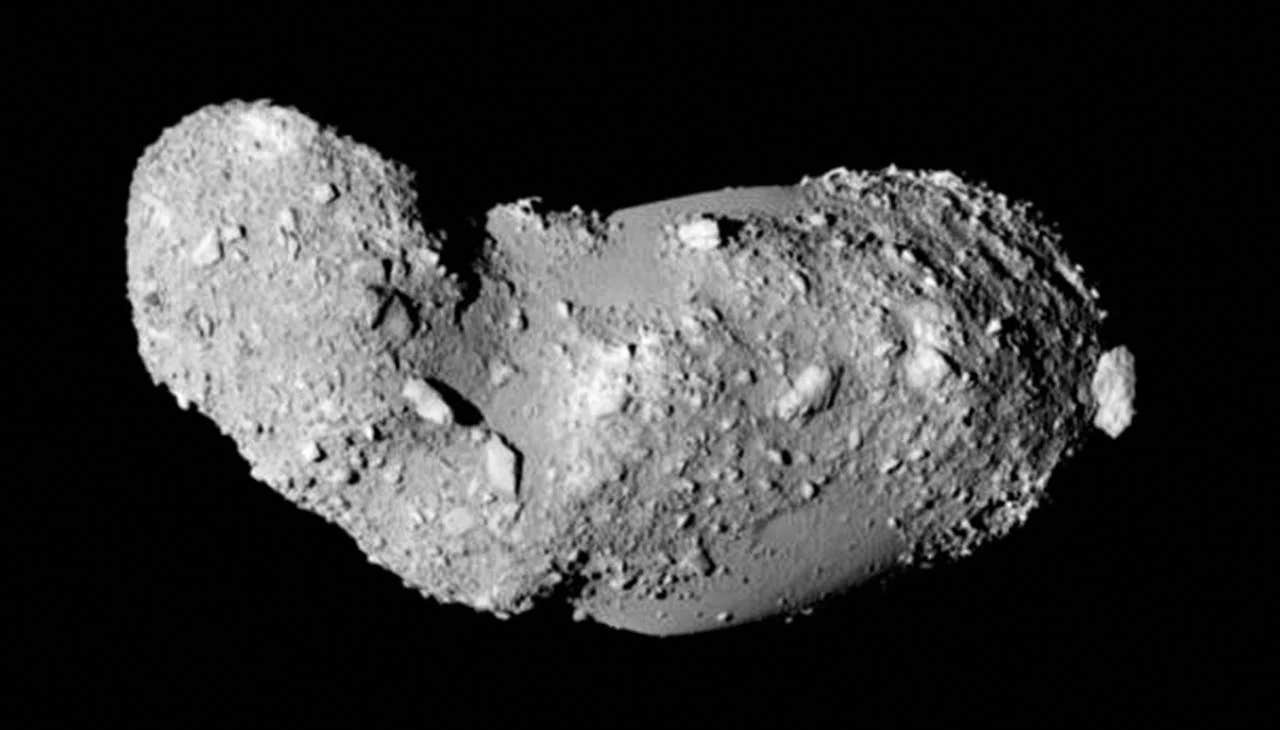Hand-held electric rail gun may be the answer to non-lethal deterence
Despite the U.S. Navy abandoning its railgun program, one company is now offering a similarly advanced weapon for purchase.

[Apr. 25, 2023: Staff Writer, The Brighter Side of News]
Holding the Arcflash GR-1 Anvil (CREDIT: Arcflash Labs)
Despite the U.S. Navy abandoning its railgun program, one company is now offering a similarly advanced weapon for purchase. Arcflash Labs, LLC is promoting their GR-1 Anvil Gauss rifle, which they claim is the "world’s first and only handheld Gauss rifle" and is available for pre-order at a cost of $3,375.
This rifle utilizes strong magnets to launch a variety of metal projectiles and has already piqued the interest of law enforcement and military agencies. However, there are still concerns about the safety and effectiveness of the Gauss rifle, which the company's CEO acknowledges.
The creators of the GR-1 Anvil Gauss rifle, David Wirth and Jason Murray, are Aerospace Engineers and former US Air Force officers with a combined 20 years of experience in pulsed power supply development, according to the Arcflash Labs, LLC website.
The weapon can reportedly launch any ferromagnetic projectile under 1/2" in diameter at speeds of 200+ fps, generating up to 100 Joules of force or 75 foot-pounds. This muzzle energy is similar to that of some .22 rifles, and the company claims that the GR-1 Anvil Gauss rifle is the most powerful coilgun available to the public and possibly the most powerful handheld coilgun ever created.
Related Stories
Coilguns, also known as Gauss rifles, employ electrified coils to create a magnetic field that propels ferromagnetic projectiles to high velocities. This concept is similar to, but different from, railguns, which use the electric field generated between current-conducting rails to launch their projectiles.
Although various handheld coilgun designs have been exhibited over the years, none have yet demonstrated enough power to be considered practical for military or security purposes.
Arcflash's rifle is 38 inches in length, has a barrel length of 26 inches, weighs 20 pounds, and runs on a 25.2-volt lithium-ion polymer battery. The stock of the rifle appears to be 3D printed, with some acrylic plastic sections bolted on, based on images available on the company's website.
According to the manufacturer, the Gauss rifle is equipped with an "advanced capacitor charging system" and a "dual Clamped Quasi-Resonant Inverter," enabling it to fire at a maximum rate of 20 rounds per minute at full power, or 100 rounds per minute at half power. The rifle's trigger mechanism is also innovative, allowing users to pre-charge the system by lightly depressing the trigger before firing with a full pull.
The Arcflash GR-1 Anvil (CREDIT:Arcflash Labs)
Regarding ammunition, the GR-1 uses magnetic fields to accelerate projectiles, meaning that any iron-rich metal slug with a diameter ranging from 11mm to 12.6mm and a length between 30 and 52mm could theoretically be fired from the handheld weapon.
New Scientist reports that the Anvil has the ability to generate muzzle energy, which is the energy of the projectile when it leaves the barrel, of approximately 85 joules. This is similar to the power of high-end air rifles and half the power of a .22 caliber rifle.
The Arcflash GR-1 Anvil in firing position at the range. (CREDIT: Arcflash Labs)
David Wirth, co-founder of Arcflash, has revealed that the majority of the inquiries they have received thus far relate to the potential use of their coilgun technology for firing non-lethal projectiles like rubber bullets or pepper spray balls. Due to the use of electromagnetism to propel the projectiles, these munitions would require ferromagnetic sabots or iron shavings embedded within them to be fired.
According to Wirth, the reason coilguns are being considered over CO2-powered devices is their ability to quickly adjust power. This feature allows users to lower the power when near a target to prevent harm or increase it when farther away to achieve the desired effect. The non-lethal aspect of coilguns is seen as an attractive feature.
Wirth believes that weapons such as the Gauss rifle produced by the company will become more prevalent as these technologies become cheaper and lighter. He predicts that gunpowder will eventually be replaced by these newer technologies since it is a thousand-year-old technology. Although there is enormous potential in this technology, Wirth acknowledges that it is still in its early stages of development.
Toth's significant algorithmic advancement involved merging the kinetic and fluid elements of plasmas into a single simulation model. This approach had previously been attempted but had proven unsuccessful until Toth devised a solution. He explained that by implementing innovative approximations and algorithms, they were able to achieve simulation speeds one million times faster than brute-force methods.
The Arcflash GR-1 Anvil in travel case (CREDIT:Arcflash Labs)
The updated algorithm incorporates a kinetic model that dynamically adjusts its coverage area based on the simulation output. The model recognizes areas of significance and allocates computational resources to concentrate on them. This process can accelerate space weather models by a factor of 10 to 100.
To enhance the efficiency of the Space Weather Modeling Framework on upcoming supercomputers heavily dependent on graphical processing units (GPUs), Toth and his team have been working under the NSF SWQU project.
Their initial objective was to port the Geospace model to GPUs using the NVIDIA Fortran compiler, along with OpenACC directives.
Recently, the team accomplished a significant milestone by running the full Geospace model faster than real-time on a single GPU. This achievement was made possible with TACC's GPU-enabled Longhorn machine. For comparison, achieving the same speed on a traditional supercomputer necessitates at least 100 CPU cores.
To make this breakthrough happen, the team spent a whole year developing the code. The ultimate goal is to execute a set of simulations quickly and efficiently to deliver a probabilistic space weather forecast.
This type of probabilistic forecasting is important for another aspect of Toth's research: localizing predictions in terms of the impact on the surface of Earth.
Note: Materials provided above by The Brighter Side of News. Content may be edited for style and length.
Like these kind of feel good stories? Get the Brighter Side of News' newsletter.
Joseph Shavit
Head Science News Writer | Communicating Innovation & Discovery
Based in Los Angeles, Joseph Shavit is an accomplished science journalist, head science news writer and co-founder at The Brighter Side of News, where he translates cutting-edge discoveries into compelling stories for a broad audience. With a strong background spanning science, business, product management, media leadership, and entrepreneurship, Joseph brings a unique perspective to science communication. His expertise allows him to uncover the intersection of technological advancements and market potential, shedding light on how groundbreaking research evolves into transformative products and industries.



